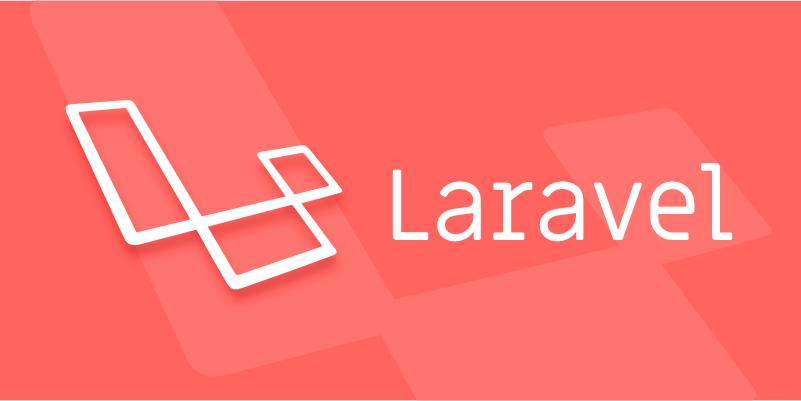Laravel custom authentication provider can meet complex user management needs by implementing the UserProvider interface and registering with the Auth service. 1. Understand the basics of Laravel's authentication mechanism. The provider is responsible for obtaining user information. Guard defines the verification method. EloquentUserProvider and SessionGuard are used by default. 2. Creating a custom User Provider requires the implementation of retrieveById, retrieveByCredentials, validateCredentials and other methods. For example, ApiKeyUserProvider can query users based on the API Key; 3. Register the provider to AuthServiceProvider and configure guards in auth.php Use this provider. Notes include correct use of Hash comparison, return objects to implement the Authenticatable interface, avoid frequent query of databases and pay attention to guard name matching issues when testing.

Laravel provides a complete authentication system by default, but if your application has more complex user management needs, such as supporting multi-role login, third-party account binding, or using a non-standard database structure, you need to customize the authentication provider. Below are some practical scenarios and suggestions.

1. Understand the basics of Laravel's certification mechanism
Laravel's certification system is based on the concepts of "provider" and "guard". Simply put:
- Provider is responsible for obtaining user information from a data source (usually a database).
- Guard defines how to verify user identity, such as session or token.
By default, Laravel uses EloquentUserProvider and SessionGuard . When you need customization, it is usually started with Provider, because it determines how you find and compare user data.

For example: If you have a unified user table, but different types of users (such as administrators, ordinary users, merchants) have different permission logic, you can create an independent provider for each type.
2. Create a custom User Provider
To customize the provider, you need to do three things:

- Implement
\Illuminate\Contracts\Auth\UserProviderinterface - Implement methods such as
retrieveById(),retrieveByCredentials(),validateCredentials(), etc. - Register this provider into the Auth service in Laravel
Let's illustrate it in a simple example: Suppose you have a middleware that identifies the user based on the API Key in the request header, not the username and password. You can write an ApiKeyUserProvider , parse the header in retrieveByCredentials() method and query the user.
class ApiKeyUserProvider implements UserProvider {
public function retrieveByCredentials(array $credentials) {
return User::where('api_key', $credentials['api_key'])->first();
}
// Other methods are omitted...
} Then, register it in AuthServiceProvider :
Auth::provider('api-key', function ($app, array $config) {
return new ApiKeyUserProvider($app['hash'], $config['model']);
}); Finally use it in the auth.php configuration file:
'guards' => [
'api' => [
'driver' => 'session',
'provider' => 'api-key',
],
],This way, you can use this guard in a specific route or controller for authentication.
3. Precautions and FAQs
Custom providers are powerful but error-prone parts. The following points need to be paid attention to:
- Be careful when comparing Hash : If you still retain the password login method, remember to use the Hash facade provided by Laravel to verify whether the password is correct, and do not implement encryption logic yourself.
- The returned object must implement UserInterface : your user model or the object you fetched from the database must implement the
\Illuminate\Contracts\Auth\Authenticatableinterface, otherwise an error will be reported. - Avoid frequent query of databases : You can appropriately cache user information, especially when you are doing API Key or Token authentication, reduce database pressure.
- Pay attention to the matching between Session and Guard during testing : Sometimes you will find that you cannot get the user after logging in, maybe because you used the wrong guard name.
If you are developing a background system and want to log in separately from the admin user, you can configure different guards and providers for them respectively, and specify which guard to use in their respective controllers.
Basically that's it. Custom providers are not complicated, but they do require you to understand Laravel's certification process and interface design. As long as you clarify the logic, you can flexibly respond to various certification needs.
The above is the detailed content of Customizing Laravel Authentication Providers.. For more information, please follow other related articles on the PHP Chinese website!

Hot AI Tools

Undress AI Tool
Undress images for free

Undresser.AI Undress
AI-powered app for creating realistic nude photos

AI Clothes Remover
Online AI tool for removing clothes from photos.

Clothoff.io
AI clothes remover

Video Face Swap
Swap faces in any video effortlessly with our completely free AI face swap tool!

Hot Article

Hot Tools

Notepad++7.3.1
Easy-to-use and free code editor

SublimeText3 Chinese version
Chinese version, very easy to use

Zend Studio 13.0.1
Powerful PHP integrated development environment

Dreamweaver CS6
Visual web development tools

SublimeText3 Mac version
God-level code editing software (SublimeText3)

Hot Topics
 What are policies in Laravel, and how are they used?
Jun 21, 2025 am 12:21 AM
What are policies in Laravel, and how are they used?
Jun 21, 2025 am 12:21 AM
InLaravel,policiesorganizeauthorizationlogicformodelactions.1.Policiesareclasseswithmethodslikeview,create,update,anddeletethatreturntrueorfalsebasedonuserpermissions.2.Toregisterapolicy,mapthemodeltoitspolicyinthe$policiesarrayofAuthServiceProvider.
 What are routes in Laravel, and how are they defined?
Jun 12, 2025 pm 08:21 PM
What are routes in Laravel, and how are they defined?
Jun 12, 2025 pm 08:21 PM
In Laravel, routing is the entry point of the application that defines the response logic when a client requests a specific URI. The route maps the URL to the corresponding processing code, which usually contains HTTP methods, URIs, and actions (closures or controller methods). 1. Basic structure of route definition: bind requests using Route::verb('/uri',action); 2. Supports multiple HTTP verbs such as GET, POST, PUT, etc.; 3. Dynamic parameters can be defined through {param} and data can be passed; 4. Routes can be named to generate URLs or redirects; 5. Use grouping functions to uniformly add prefixes, middleware and other sharing settings; 6. Routing files are divided into web.php, ap according to their purpose
 How do I run seeders in Laravel? (php artisan db:seed)
Jun 12, 2025 pm 06:01 PM
How do I run seeders in Laravel? (php artisan db:seed)
Jun 12, 2025 pm 06:01 PM
Thephpartisandb:seedcommandinLaravelisusedtopopulatethedatabasewithtestordefaultdata.1.Itexecutestherun()methodinseederclasseslocatedin/database/seeders.2.Developerscanrunallseeders,aspecificseederusing--class,ortruncatetablesbeforeseedingwith--trunc
 How do I run tests in Laravel? (php artisan test)
Jun 13, 2025 am 12:02 AM
How do I run tests in Laravel? (php artisan test)
Jun 13, 2025 am 12:02 AM
ToruntestsinLaraveleffectively,usethephpartisantestcommandwhichsimplifiesPHPUnitusage.1.Setupa.env.testingfileandconfigurephpunit.xmltouseatestdatabaselikeSQLite.2.Generatetestfilesusingphpartisanmake:test,using--unitforunittests.3.Writetestswithmeth
 What is the purpose of the artisan command-line tool in Laravel?
Jun 13, 2025 am 11:17 AM
What is the purpose of the artisan command-line tool in Laravel?
Jun 13, 2025 am 11:17 AM
Artisan is a command line tool of Laravel to improve development efficiency. Its core functions include: 1. Generate code structures, such as controllers, models, etc., and automatically create files through make: controller and other commands; 2. Manage database migration and fill, use migrate to run migration, and db:seed to fill data; 3. Support custom commands, such as make:command creation command class to implement business logic encapsulation; 4. Provide debugging and environment management functions, such as key:generate to generate keys, and serve to start the development server. Proficiency in using Artisan can significantly improve Laravel development efficiency.
 What are controllers in Laravel, and what is their purpose?
Jun 20, 2025 am 12:31 AM
What are controllers in Laravel, and what is their purpose?
Jun 20, 2025 am 12:31 AM
The main role of the controller in Laravel is to process HTTP requests and return responses to keep the code neat and maintainable. By concentrating the relevant request logic into a class, the controller makes the routing file simpler, such as putting user profile display, editing and deletion operations in different methods of UserController. The creation of a controller can be implemented through the Artisan command phpartisanmake:controllerUserController, while the resource controller is generated using the --resource option, covering methods for standard CRUD operations. Then you need to bind the controller in the route, such as Route::get('/user/{id
 How do I start the Laravel development server? (php artisan serve)
Jun 12, 2025 pm 07:33 PM
How do I start the Laravel development server? (php artisan serve)
Jun 12, 2025 pm 07:33 PM
To start the Laravel development server, use the command phpartisanserve, which is provided at http://127.0.0.1:8000 by default. 1. Make sure that the terminal is located in the project root directory containing the artisan file. If it is not in the correct path, use cdyour-project-folder to switch; 2. Run the command and check for errors. If PHP is not installed, the port is occupied or file permissions are problematic, you can specify different ports such as phpartisanserve--port=8080; 3. Visit http://127.0.0.1:8000 in the browser to view the application homepage. If it cannot be loaded, please confirm the port number, firewall settings or try.
 How do I use Laravel's validation system to validate form data?
Jun 22, 2025 pm 04:09 PM
How do I use Laravel's validation system to validate form data?
Jun 22, 2025 pm 04:09 PM
Laravelprovidesrobusttoolsforvalidatingformdata.1.Basicvalidationcanbedoneusingthevalidate()methodincontrollers,ensuringfieldsmeetcriterialikerequired,maxlength,oruniquevalues.2.Forcomplexscenarios,formrequestsencapsulatevalidationlogicintodedicatedc






